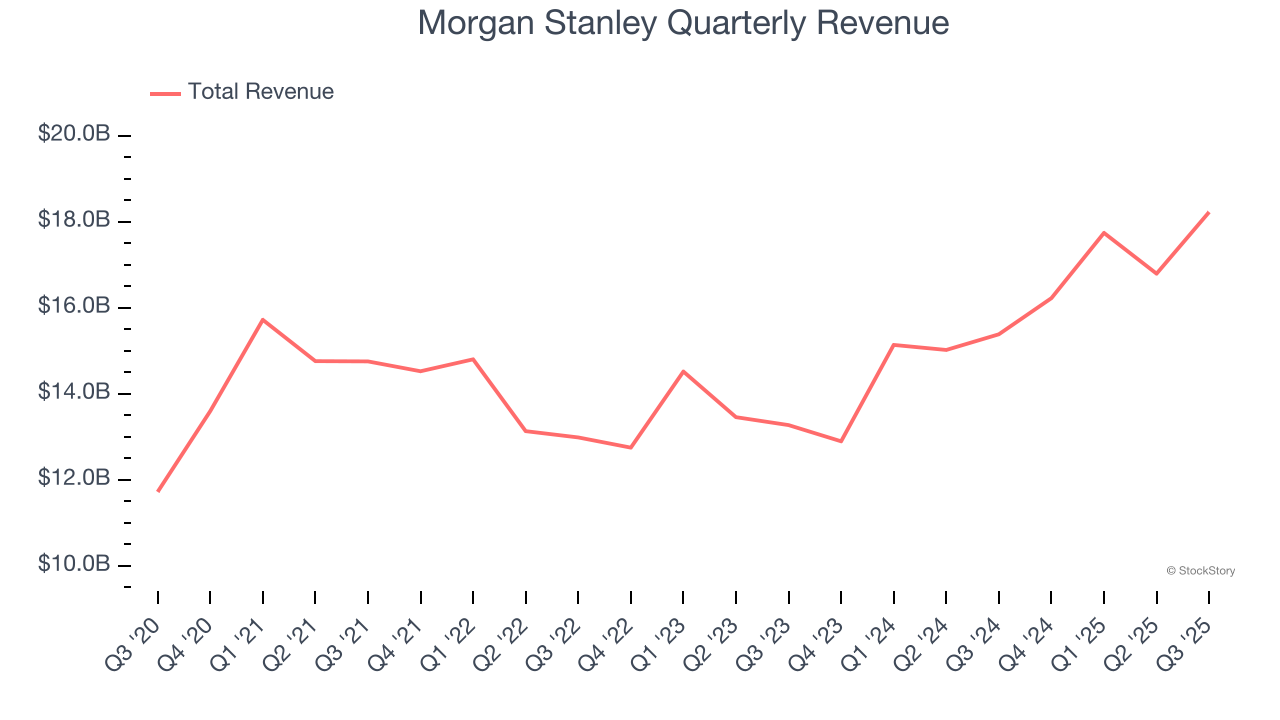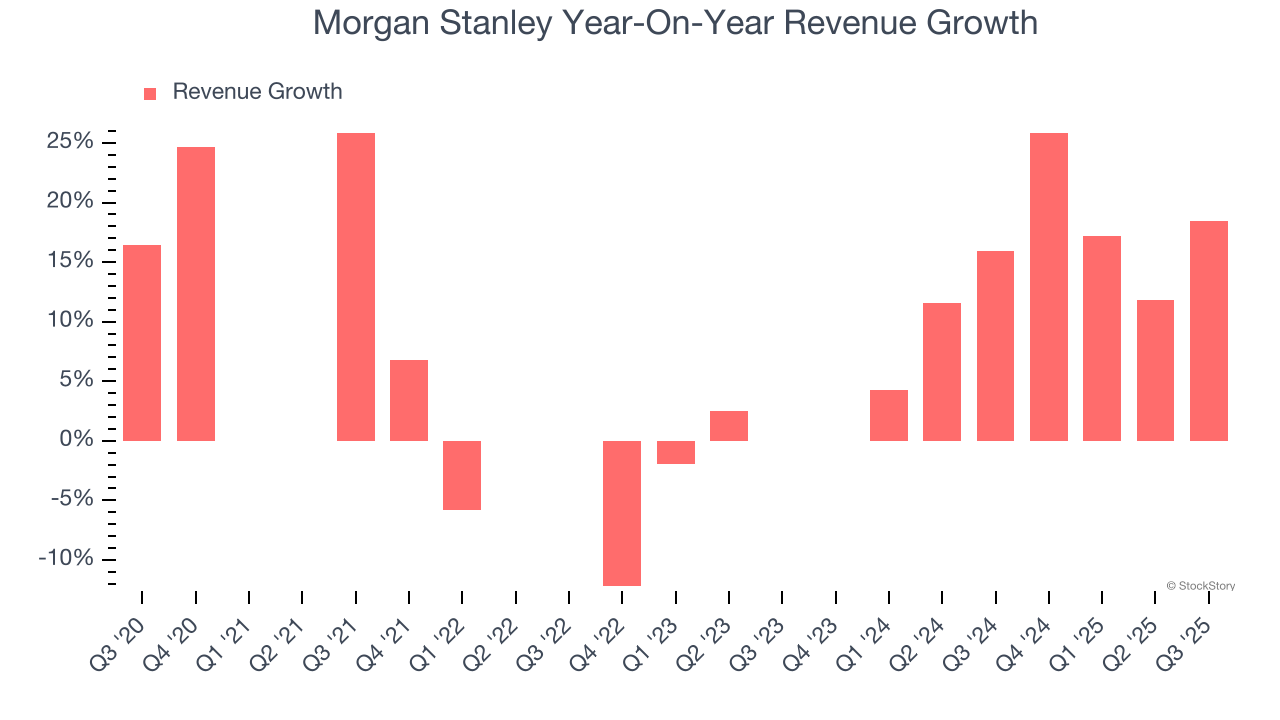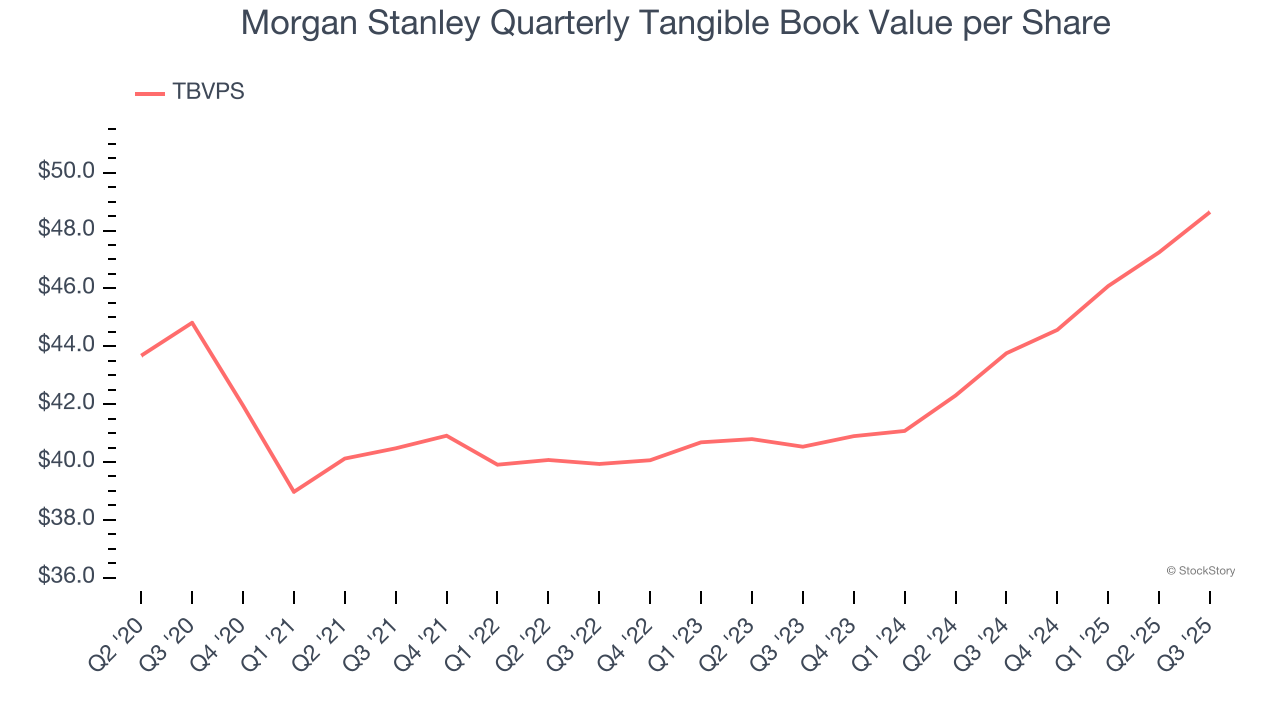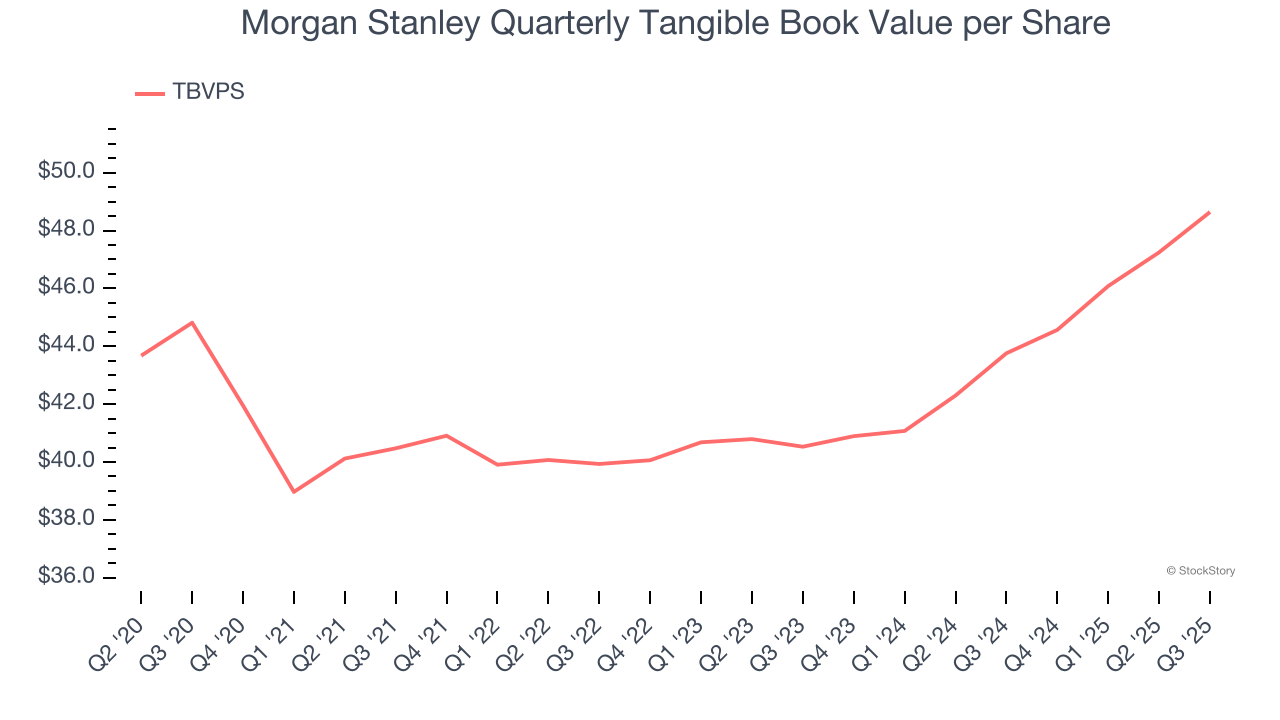
Global financial services firm Morgan Stanley (NYSE: MS) reported Q3 CY2025 results beating Wall Street’s revenue expectations, with sales up 18.5% year on year to $18.22 billion. Its GAAP profit of $2.80 per share was 32.6% above analysts’ consensus estimates.
Is now the time to buy Morgan Stanley? Find out by accessing our full research report, it’s free for active Edge members.
Morgan Stanley (MS) Q3 CY2025 Highlights:
- Revenue: $18.22 billion vs analyst estimates of $16.7 billion (18.5% year-on-year growth, 9.2% beat)
- Efficiency Ratio: 67% vs analyst estimates of 71.8% (478 basis point beat)
- EPS (GAAP): $2.80 vs analyst estimates of $2.11 (32.6% beat)
- Tangible Book Value per Share: $48.64 vs analyst estimates of $47.98 (11.2% year-on-year growth, 1.4% beat)
- Market Capitalization: $248 billion
Company Overview
Founded in 1924 during the post-WWI economic boom by former JP Morgan partners, Morgan Stanley (NYSE: MS) is a global financial services firm that provides investment banking, wealth management, and investment management services to corporations, governments, institutions, and individuals.
Revenue Growth
A company’s long-term sales performance can indicate its overall quality. Even a bad business can shine for one or two quarters, but a top-tier one grows for years. Thankfully, Morgan Stanley’s 8.4% annualized revenue growth over the last five years was decent. Its growth was slightly above the average financials company and shows its offerings resonate with customers.

Long-term growth is the most important, but within financials, a half-decade historical view may miss recent interest rate changes and market returns. Morgan Stanley’s annualized revenue growth of 13% over the last two years is above its five-year trend, suggesting its demand recently accelerated.  Note: Quarters not shown were determined to be outliers, impacted by outsized investment gains/losses that are not indicative of the recurring fundamentals of the business.
Note: Quarters not shown were determined to be outliers, impacted by outsized investment gains/losses that are not indicative of the recurring fundamentals of the business.
This quarter, Morgan Stanley reported year-on-year revenue growth of 18.5%, and its $18.22 billion of revenue exceeded Wall Street’s estimates by 9.2%.
Unless you’ve been living under a rock, it should be obvious by now that generative AI is going to have a huge impact on how large corporations do business. While Nvidia and AMD are trading close to all-time highs, we prefer a lesser-known (but still profitable) stock benefiting from the rise of AI. Click here to access our free report one of our favorites growth stories.
Tangible Book Value Per Share (TBVPS)
Financial firms generate earnings through diverse intermediation activities, making them fundamentally balance sheet-driven enterprises. Investors focus on balance sheet quality and consistent book value compounding when evaluating these multifaceted financial institutions.
When analyzing this sector, tangible book value per share (TBVPS) takes precedence over many other metrics. This measure isolates genuine per-share value and provides insight into the institution’s capital position across diverse operations. Other (and more commonly known) per-share metrics like EPS can sometimes be murky due to the complexity of multiple business lines, M&A activity, or accounting rules that vary across different financial services segments.
Morgan Stanley’s TBVPS grew at a sluggish 1.7% annual clip over the last five years. However, TBVPS growth has accelerated recently, growing by 9.6% annually over the last two years from $40.53 to $48.64 per share.

Tangible Book Value Per Share (TBVPS)
Financial institutions manage complex balance sheets spanning various financial activities. Valuations reflect this complexity, emphasizing balance sheet quality and long-term book value compounding across multiple revenue streams.
This is why we consider tangible book value per share (TBVPS) an important metric for the sector. TBVPS represents the real net worth per share across all business segments, providing a clear measure of shareholder equity regardless of the complexity of operations. EPS can become murky due to the complexity of multiple revenue streams, acquisition impacts, or accounting flexibility across different financial services, and book value resists financial engineering manipulation.
Morgan Stanley’s TBVPS grew at a sluggish 1.7% annual clip over the last five years. However, TBVPS growth has accelerated recently, growing by 9.6% annually over the last two years from $40.53 to $48.64 per share.

Key Takeaways from Morgan Stanley’s Q3 Results
It was good to see Morgan Stanley beat analysts’ EPS expectations this quarter. We were also excited its revenue outperformed Wall Street’s estimates by a wide margin. Zooming out, we think this was a solid print. The stock traded up 3.9% to $161.49 immediately following the results.
Indeed, Morgan Stanley had a rock-solid quarterly earnings result, but is this stock a good investment here? What happened in the latest quarter matters, but not as much as longer-term business quality and valuation, when deciding whether to invest in this stock. We cover that in our actionable full research report which you can read here, it’s free for active Edge members.







